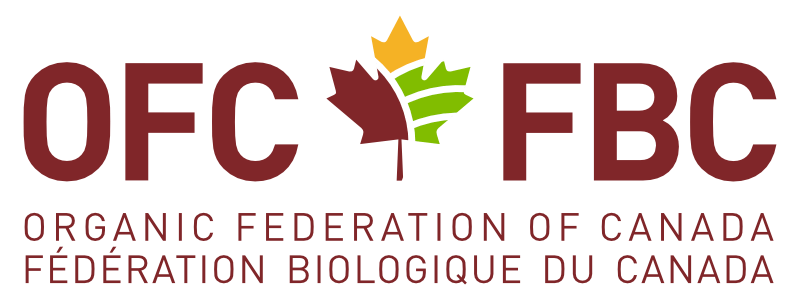Summary
Interviewed by Jordan Marr, Dr. Mehdi Sharifi, from AAFC, in partnership with Dr. Liette Vasseur, tests the combinations of cover crops, rootstocks, and irrigation for enhancing vineyard soil health, and thus grape production and quality.
Download the interview with Mehdi Sharifi in PDF format.
Additional information
Best Cover Cropping in Organic Vineyards
Southbrook Vineyards is a certified organic and biodynamic winery located in the heart of the Niagara Peninsula wine region in Ontario, Canada. Southbrook participates to the Organic Science Cluster 3 (OSC3) Activity 15, researching unique cover crops, rootstocks, and irrigation techniques for Canadian vineyards.
The Organic Federation of Canada (OFC) interviewed Southbrook’s Ann Sperling, their Director of Winemaking and Viticulture, to talk about what makes their vineyard so unique and their ongoing contributions to organic viticulture research initiatives.
I am a research scientist with Summerland Research and Development Centre with Agriculture Agri-Food Canada (AAFC). My research focuses on nutrient management working with cover crops and soil amendments in vineyards and orchards.
Would like to talk about your recent research?
Yes. Part of my research focuses on cover crops in vineyards. As of November 2020, we are in the third year of a five-year project under the Canadian Agricultural Partnership (CAP), which the Government of Canada supports in collaboration with industry.
The interest for the topics came from the growers and the grower association, the BC Wine and Grape Council. We designed the research in a way to answer questions from the industry and the growers.
We have two locations. I am collaborating with [researchers at] Brock University – they are working in more humid-climate vineyards mainly in the Niagara area and the northern shore of Lake Erie. I am working on the BC components, and we are exchanging ideas and working together to conduct this research.
There are three phases to the study in BC. The first step was screening cover crops in the greenhouse. I grew a wide range of cover crops in the vineyard soil in a greenhouse and looked at the growth pattern of the cover crops. Later, I harvested the cover crops, processed their biomass and added it back to the greenhouse soil. We then planted grapes in the greenhouse on the same soil to see how they grew after the cover crops had been incorporated. Based on the information from phase one, we came up with a short list of cover crops that would be suitable for grape vineyards.
The next season, we selected three sites in the Okanagan Valley, which has a range of microclimates. The north is a little bit cooler, whereas the south, of course, is a little bit warmer. I got the help of two commercial organic vineyards – Covert Family Farms Estate, a large organic vineyard in the center – and Kalala Organic Winery in the more northern area in West Kelowna. In the Summerland area, I used one of our AAFC grape blocks.
I started 15 different cover crops in the alleyways and nine cover crops under the vines. We collected information on the pattern of the cover crop’s growth, establishment and competitiveness with weeds. We need a cover crop that can survive in the vineyard without the need for a lot of maintenance.
Could you describe the traditional status quo in most vineyards and what led to this research? I would guess that in conventional, this would be using herbicide on the ground and under the vines, and a pretty standard grass mixture in the alleyways. Could you clarify that?
The standard practice in commercial vineyards is to spray glyphosate or Roundup two to four times during the growing season. This stops the growth of any kind of plant under the vines. The purpose is to take away any kind of competition with the vines.
In recent years, there has been a huge movement in the world for using less agrichemicals, especially herbicides, in the vineyards. Regulations require that after spraying herbicides, especially Roundup, you need to wait at least 30-45 days pass before harvesting. So, you cannot spray the product before harvest.
These regulations are more strict in Europe. Last year, French President Emmanuel Macron announced that France will be producing herbicide-free or Roundup-free wine in 2020. This huge movement put pressure on the rest of the world to reduce the use of these herbicides.
If growers cannot spray herbicides under the vines, they need a different method for controlling the weeds. One traditional method is to mechanically remove the weeds under the vine, either by hand or by equipment. The downside is that this kind of physical activity is very time-consuming and costly, and using a machine disturbs the soil. We know that these kinds of disturbances, such as tillage or using weed removers, can cause the organic matter in the soil to decompose faster. This is not encouraged, and so the alternative is growing cover crops.
Could you talk about what a good cover crop mix in an alleyway could achieve and look like, and the same for under the vines?
We had some ideas before we started based on the literature and past experiences. But we also gained great information from our last year of research. We came up with a list of characteristics of good cover crops for alleyways and good cover crops for under the vines.
Good cover crops usually establish easily and compete with weeds. If the cover crop is not extremely competitive, then the weeds will take over and the cover crop will disappear.
Also, the seeds must be available at a reasonable price. Seeds that are extremely expensive won’t be feasible for growers to use.
The other consideration is that there is traffic in the alleyways during the season: tractors, among other things, coming and going in the spring. The cover crops need to be resistant to traffic.
Perennial cover crops usually have an advantage over annuals because once you establish them, they are good for two to three years. You just need to maintain them. This means that you don’t have to re-seed and do all the preparation that might be time-consuming and costly [each year].
Another very important point is that cover crops should not harbour pests or diseases.
For under the vines, the crops should not produce a lot of biomass, or that will create the need to mow under the vines frequently, which will again add a cost. Also, they should not enter the fruiting zone. Cover crops that grow really tall, like buckwheat and phacelia, are not suitable because they make maintenance and harvest more difficult.
For under the vine, the cover crops should not be competitive, because they grow right under the vine where you do all of your management, meaning that deep-rooted crops such as alfalfa, which is suitable for the alleyways, is not suitable for underneath the vines. The alfalfa roots will start to compete with the vine roots. Cover crops that grow on the surface and only compete with weeds are fine. Again, perennials have an advantage over annuals.
Attention to characteristics such as cold-hardiness and drought-tolerance is also important. The Okanagan is a dry or semi-arid climate. If a cover crop can withstand drought in the summertime, that’s definitely a bonus, as are perennials that can survive the winter. Warm-climate cover crops are not great options, because they only grow in the summer. As soon as the weather gets cold, they cannot survive.
There are so many considerations. Is there any cover crop or cover crop mixture, I’m thinking of under the vines, that has the potential to improve the quality of the crop? Any promising results in that respect either through past research or your findings?
Yes, some cover crops, such as white clover, have shown some promising results in the literature. Also, turnips and some brassicas have been successful. In our research, we got good results with white clover, with great establishment in several vineyards. I have been very happy with that. Lentils have also been very successful in this region; they did great in all three sites.
Unfortunately, turnips and brassicas did not work out. With turnips, we had a lot of wireworm damage. Although brassicas establish well and look great, they harbour pests, such as aphids or mites, so for that reason we did not choose to continue with them. Phacelia attracts a lot of beneficial insects, which was really great. It was also beautiful, but not competitive with the weeds and hard to establish – but it’s really nice when mixed with a competitive species.
Where are you at in your research? When do you expect to report some findings?
Last year, I had 280 plots across the Okanagan Valley. We got fantastic results and established some tables with the data. I am working with a modeller to develop a model that will help growers select the best cover crops for their location, the type of soil and the microclimate. That’s very exciting. This is based on last year’s results, the second phase (the field screening of the cover crops).
This year, we work on the selection. We are doing more detailed studies of three cover crops in the alleyway and three cover crops under the vine. We established those cover crops in the fall. Over the next two years, we will look at the response of the vine, the growth of the cover crops, and the impact of the cover crops on the soil biome – the interaction with nematodes and other organisms in the soil, the interaction with the carbon-nitrogen cycling in the soil, and the effect on yield and yield quality of the grapes. We are going to look at all these aspects with the selected groups of cover crops in two vineyards, one in the south in OIiver and one in West Kelowna. We are really looking forward to seeing the results and monitoring the different parameters in the next two years. Exciting things are coming!
How transferable is your research to orchard management? I’m thinking most orchards are laid out in the same way as vineyards, with alleyways and under tree management; is there much transferability potential?
You know it seems very similar but there are some differences in orchards versus vineyards. The distances between the trees and between alleyways is different, and the level of shading from the trees is also different. Although, there are also a lot of similarities! I am very interested to do some studies in orchards in the future. I do believe a good portion of the results would be transferable, especially to high-density orchards that have similar structure to vineyards. The older orchards or more traditional ones might be slightly different, but it would be possible to use the cover crops on those systems with some modifications.
Mehdi, that was all so fascinating. If listeners [and readers] want to learn more about your research, what is the easiest way for them to access what you are doing?
I am working on some publications that will be available to readers on the more scientific side of things. We are also developing fact sheets that will be posted online, and I will be giving presentations at different grower meetings and seminars, which is more virtual nowadays. These will be advertised through the BC Wine Grapes Association. You can always contact me and I would be more than happy to answer any questions.
Mehdi, thank you so much for joining me on the podcast, I know my colleagues will be really interested to hear about this work you are doing!
Thanks again, Jordan, it was great to talk with you.






